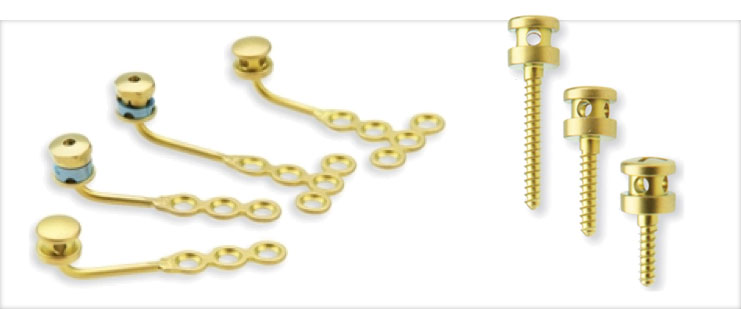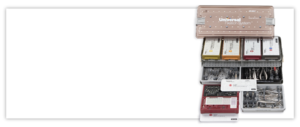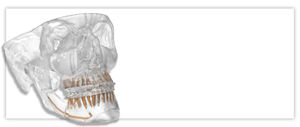
The Skeletal Anchoring System
Overview
The Skeletal Anchoring System is a bone borne temporary anchorage device comprised of titanium anchor screws and plates. This system is designed for use as an anchor in orthodontic procedures such as intrusion/extrusion of teeth, space closure, distal/mesial movement, and 3D control of teeth.
Features and benefits
Anchor screw
Designed to minimize patient trauma and provide quick removal.
Anchor plate
Intended to provide more stable fixation than anchor screws, and to prevent disturbance of teeth movement.
Locking anchor plate
This technology allows orthodontists to secure orthodontic appliances or accessories in the guide holes, providing versatility and control throughout the treatment plan.
Clinical evidence
The skeletal anchorage system (SAS) consists of titanium anchor plates and monocortical screws that are temporarily placed in either the maxilla or the mandible, or in both, as absolute orthodontic anchorage units. Distalization of the molars has been one of the most difficult biomechanical problems in traditional orthodontics, particularly in adults and in the mandible. However, it has now become possible to move molars distally with the SAS to correct anterior crossbites, maxillary dental protrusion, crowding, and dental asymmetries without having to extract premolars. This study evaluated the treatment and posttreatment changes during and after distalization of the mandibular molars. In 15 adult patients (12 women and 3 men), a total of 29 mandibular molars were successfully distalized with SAS. The amount of distalization and relapse and the type of tooth movement were analyzed with cephalometric radiographs and dental casts. The average amount of distalization of the mandibular first molars was 3.5 mm at the crown level and 1.8 mm at the root level. The average amount of relapse was 0.3 mm at both the crown and root apex levels. Of 29 mandibular molars, 9 were tipped back, and the others were translated distally in accordance with the established treatment goals. SAS is a viable modality to move mandibular molars for distally correcting anterior crossbites, malocclusions characterized by mandibular anterior crowding, and dental asymmetries.
Though not a novel therapeutic concept, the use of miniscrew implants to obtain absolute anchorage has recently become very popular in clinical orthodontic approaches. The mode of anchorage facilitated by these implant systems has a unique characteristic owing to their temporary use, which results in a transient, albeit absolute anchorage. The foregoing properties together with the recently achieved simple application of these screws have increased their popularity, establishing them as a necessary treatment option in complex cases that would have otherwise been impossible to treat. The aim of this comprehensive review is to present and discuss the development, clinical use, benefits, and drawbacks of the miniscrew implants used to obtain a temporary but absolute/skeletal anchorage for orthodontic applications. Topics to be discussed include classification, types and properties (e.g., biocompatibility, osseointegration, types of anchorage, screw head, and thread design), clinical applications, site and placement method selection, clinical procedures for implant insertion, and loading and removal processes. Lastly, the potential complications and the advantages and disadvantages accompanying their use are presented.
CMF-WC-58_Rev. None_18997



